The list includes the most popular sights of St. Petersburg .Each of the historical sites, ranked in the top ten, has great significance and value for the city.
10
Cruiser Aurora
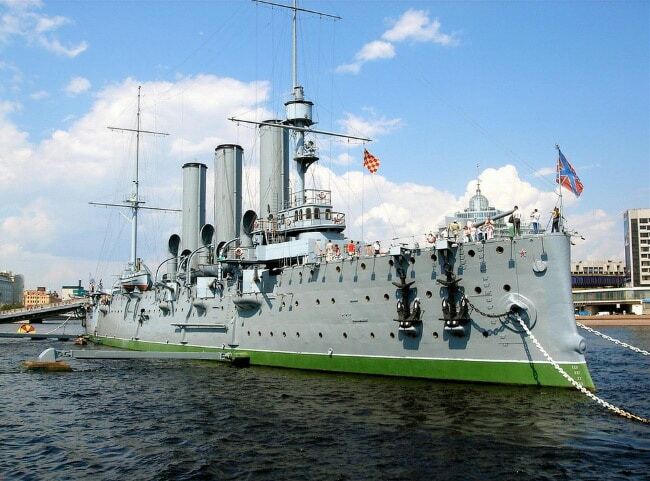
Cruiser Aurora opens the top ten attractions of St. Petersburg. The cruiser is a monument to the revolutionary past of the city and is its symbol. He is considered the number one ship in the Russian navy and is included in the mandatory program of visiting visitors to the city. Museum on the water to date, it contains more than five hundred unique exhibits, which are stored in six spaces of the ship.
9
Museum of the History of St. Petersburg
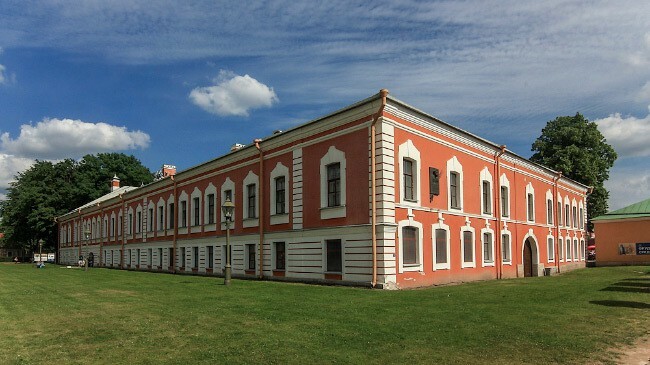
The Museum of the History of St. Petersburg is a part of the museum complex of the sights of the majestic city of Russia. This is one of the largest historical museums in Russia. Its foundation was the initiative of architects-artists in 1907.It is here that you can learn the full story of the formation of the city. The museum complex includes the Rumyantsev Mansion, the Fortress of Oreshek, the Peter and Paul Fortress, the Press Museum and much more. For those who want to learn more about the history of St. Petersburg, the complex is compulsory for visiting.
8
Great cascade in Peterhof
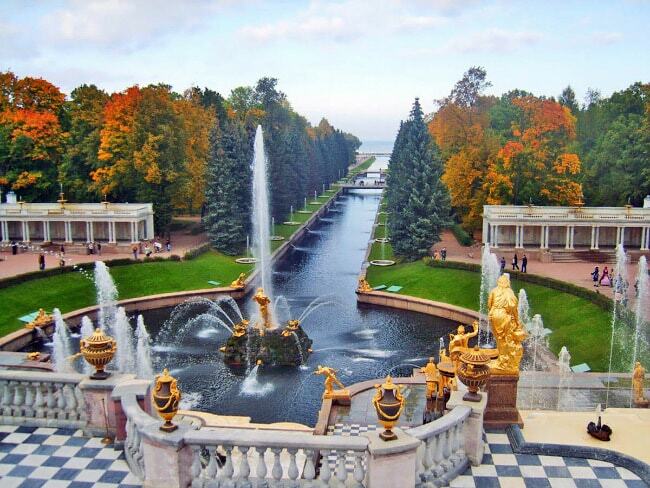
Great cascade in Peterhof - the most beautiful landmark in St. Petersburg. The grandiose fountain structure of the Peterhof ensemble is considered one of the best in the whole world. His artistic design dates back to the 18th century and consists in the idea of glorifying the triumph of the Russian Empire, when she gained access to the Baltic Sea and won the Northern War with Sweden. Over thirty gilded sculptures in the form of mythical heroes and gods and twenty-nine bas-reliefs, as vividly depict the theme of victory.
7
St. Isaac's Cathedral

St. Isaac's Cathedral - one of the largest architectural sights of St. Petersburg church of origin. Today it serves as a museum in which worship services are performed almost every day. The architectural building is one of the outstanding examples of late classicism, which traces such trends as Byzantine style, eclecticism and Byzantine style. The height of the building exceeds 100 meters, and the diameter of the dome is about 26 meters. Monolithic columns of various sizes, of which there are 112, adorn the cathedral.
6
The Savior on Blood
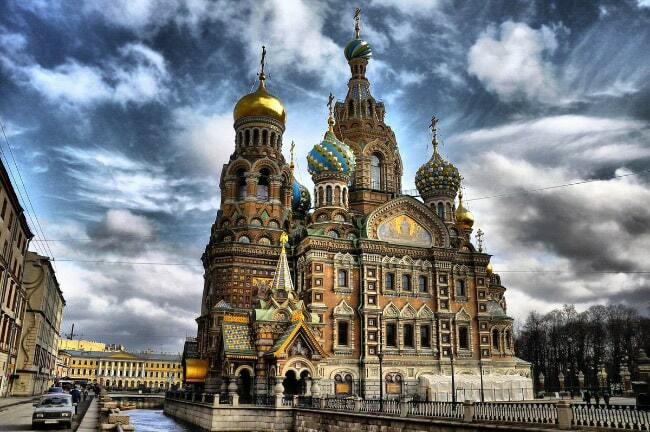
The Savior on Blood is a majestic landmark of St. Petersburg, also referred to as the Church of the Resurrection of Christ. The church building was erected in 1907, and all for the construction took 14 years. The construction of the temple began in honor of the memory of Alexander II, mortally wounded by a bomb in 1881.Initially, ordinary parishioners could not attend it, only services that were devoted to the memory of the deceased king were held in it. During the Great Patriotic War, the temple began to serve as a morgue and at the same time a vegetable storehouse. Ironically, it began to be called "saved on potatoes".For a long time the building was in a deplorable state and only in 1997 it was completely restored and opened to visitors.
5
Mikhailovsky Palace
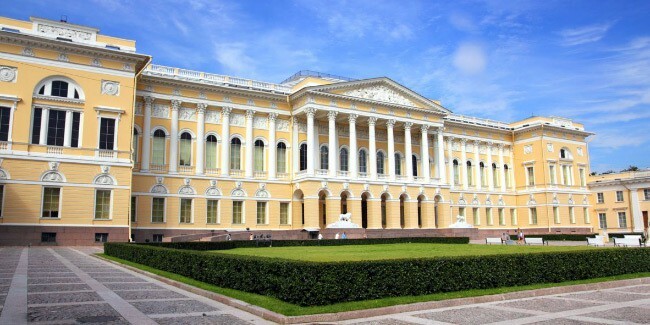
The Mikhailovsky Palace is a magnificent landmark of St. Petersburg, located in the heart of the city, on the Arts Square. The former grand duke's palace was erected as a residence for Mikhail Pavlovich. The architect of the construction was the Italian Carl Rossi. Now the building is a Russian museum, which has collected more than four hundred exhibits of sculptures, paintings and other folk art. Due to the large collection of the museum in its time, it underwent changes in the form of an extension of the new building.
4
Summer Palace of Peter I

The Summer Palace of Petra I is included in the list of the best and most remarkable sights of Petersburg. Today it serves as a branch of the Russian Museum. The building is built in the style of "Peter's Baroque", dating from 1714, is on the list of the oldest buildings of the city. The Summer Palace was originally intended only for use in the warm season, as indicated above all by the thin walls of the structure and single frames. At present, the former residence of Peter I is closed for restoration and promises to be opened renewed by early summer of 2017.
3
Peter and Paul Fortress

Peter and Paul Fortress is a famous landmark of St. Petersburg. It is with her that the story of Peter's becoming begins. Its construction began in 1703 according to the plan drawn up by Peter the Great and the French engineer Lambert. The historic purpose of the structure was to protect the city from the attack of the armies of Sweden. The greatest historical value is the Peter and Paul Cathedral, which performed in its time the functions of the royal burial vault, the church, and at one time served as a prison, considered one of the most severe in the city. To date, the remains of the Romanov dynasty rest in the cathedral.
2
Kunstkamera
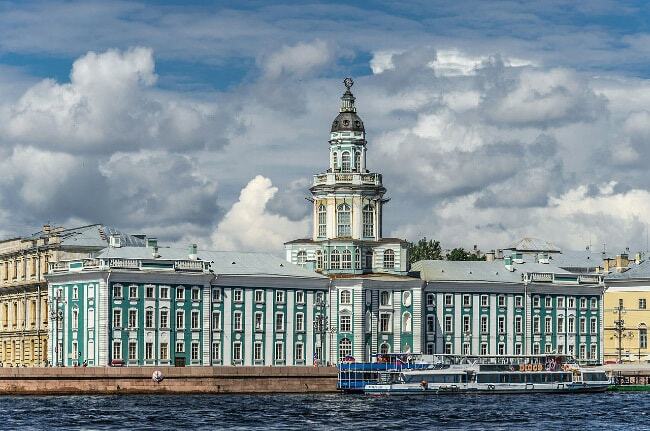
Kunstkamera is a very popular sight in St. Petersburg. The full modern name is the Peter the Great Museum of Anthropology and Ethnography of the Russian Academy of Sciences. It is the first museum that was founded by Peter I. Here is a unique collection of objects that reveals the history and life of many peoples. But most of all the museum's value is precisely because of its collection of anomalies and anatomical rarities. Kunstkamera was laid in 1718 by order of Peter the Great, and the architect was the German master Mattarnovi. He owns the development of the project of the building. The construction of the future museum lasted for 18 years, after which a building in the style of "Peter's Baroque" was received.
1
Alexandrinsky Theater

The Alexandria Theater is one of Peter's main attractions. It is considered the oldest drama theater in Russia. It was founded by the decree of Empress Elizaveta Petrovna and was originally called "Russian for the representations of tragedies and comedies theater."The theater received its current name in honor of the wife of Nicholas I Alexandra Feodorovna. Today, the majestic building is considered a full-fledged architectural monument of St. Petersburg, included in the UNESCO list.



